Abstract 5/2016
Table of content
Kazimierz Jamroz, Jacek Oskarbski, Marcin Zawisza, Michał Miszewski, Karol Żarski – Traveler Information System in the Tricity traffic management
Jacek Oskarbski, Krystian Birr , Michał Miszewski, Karol Żarski – Average speed of public transport vehicles estimation based on data from traffic control system
Piotr Kisielewski – Modern design and integration platform of IT systems in urban public transport
Mariusz Kieć, Sylwia Pogodzińska – Assessment of road safety on the ISSRRP roads
Mirosław Czerliński, Rafał Ruść, Józef Suda – Evaluation of trams priorities efficiency in VISSIM simulation of SPRINT/ITS/SCATS system
Piotr Dera, Michał Wojtaszek – Tram Traffic Supervision System extension within the project: Development of Public Transport Management System in Krakow
Paweł Gora – Simulation-based Traffic Optimization with Application of Genetic Algorithms and High-Performance Computing
Jan Aleksandrowicz, Maciej Piwowarczyk – Architecture of information on the priority for the public transport vehicle drivers
Jan Aleksandrowicz, Maciej Piwowarczyk – Methods for detection of the public transport vehicles and their functionality
Abstracts
Kazimierz Jamroz, Jacek Oskarbski, Marcin Zawisza, Michał Miszewski, Karol Żarski
Traveler Information System in the Tricity traffic management
Abstract. Dynamic information for drivers is one of the key elements of modern traffic management systems. Systems providing current traffic information for the drivers have been used for a long time in a wide scale in Europe on motorways and urban roads. The infrastructure that allows to present traffic related information with dedicated electronic boards (i.a. traffic congestions, updated journey times on the road network) is being developed also in Poland. Such information allows drivers to choose optimal routes which contribute with minimization of inconveniences and cost of the journey. Variable Message Signs also allow to manage dynamically with the traffic speed with reference to the information about weather conditions, temporary impediments (i.a. road works), traffic incidents. This actions influence the level of traffic safety of road users and the level of transport system reliability. The article presents Advanced Traveler Information Systems implemented in Poland. The foundations of ATIS in TRISTAR and the infrastructure applied in this system is described. Also connection of different TRISTAR components which supply ATIS with various data is presented together with the vision of its development.
Key words: dynamic information for drivers, variable message signs, traffic management, Intelligent Transport Systems
Jacek Oskarbski, Krystian Birr , Michał Miszewski, Karol Żarski
Average speed of public transport vehicles estimation based on data from traffic control system
Abstract: Intelligent Transport Systems are a valuable source of traffic information, covering both private cars and public transport vehicles. The main problem, however, is that very few studies are conducted to determine the speed of buses, trams and trolleys in urban networks in relation to traffic conditions. The article investigates how ITS systems data could be used to model the speed of public transport vehicles. This is now possible thanks to the implementation of TRISTAR, an Integrated Traffic Management System covering the Tri – City (Gdansk, Sopot, Gdynia). The objective of the analysis is to develop a method for modelling public transport vehicle speed which is completed with the data from the TRISTAR subsystems. The paper explains how various data can be collected, used and combined to develop speed models. The results of analyses and a proposed speed model for Gdynia’s public transport vehicles are presented. This is to be further verified by applying the proposed method in other cities. The speed model can also be used for updating existing public transport timetables. It is also possible to use the speeds for calibrating macroscopic simulation models.
Keywords: speed modelling, public transport, Intelligent Transport Systems
Piotr Kisielewski
Modern design and integration platform of IT systems in urban public transport
Abstract: Time table is the basis for the logistics and the fundamental IT system in an urban public transport. Nowadays the software for time table design are the advanced technology IT systems which offer possibilities of detail transit network design, automatic generation of vehicle trips, vehicle and driver tasks, simulation of vehicle traffic in the network and analysis of operational cost of transport system. Actually time table systems provide necessary data to other urban systems as passenger information systems, ticketing, traffic monitoring and control, ITS and others. In the article an important functionalities of modern timetabling system, forming simultaneously integration platform of IT systems in city public transit have been presented.
Key words: public transport, network design, time table planning and optimization, IT system, integration platform
Mariusz Kieć, Sylwia Pogodzińska
Assessment of road safety on the ISSRRP roads
Abstract: The article presents an assessment of road safety for the roads included in the dynamic route guidance system called the Intelligent Traffic Control System in Tatra Region (ISSRRP). Evaluation of road safety was carried out based on the odds ratio method. Accidents data from years 2009-2014 have been used for estimating changes in road safety, separately for regional and national roads, as part of traffic control system, and for the whole system. The changes of type and circumstances of accidents are also presented in the article. Number of accidents, people injured and fatalities, and accident rates (e.g. accident density, relative rate of accident and hazard ratio) have been selected as road safety measures. Negative effects on road safety in the period after the ISSRRP implementation has been shown. It was mainly on national roads, included in the system, in relation to the reference group, which is consisted of selected national roads in Małopolska region.
Key words: road safety, ISSRRP, traffic control, odds ratio, ITS, accident
Mirosław Czerliński, Rafał Ruść, Józef Suda
Evaluation of trams priorities efficiency in VISSIM simulation of SPRINT/ITS/SCATS system
Abstract. The article discusses the assessment of the effectiveness of trams priorities implemented in traffic management system SPRINT/ITS/SCATS being completed in Bydgoszcz. For the purpose of analyses the model of four junctions on the Fordońska street was implemented. The introduction describes the exact location of analysed road system and the purpose of considerations. Also the scope of the study and performance indicator have been defined. The main part of article presents detailed description of each intersection located on the test section of the road. Moreover it describes control method in traffic management system SCATS as well as a way of individual and collective transport vehicle detection. In addition the methods of realization of tram priority were described. Four models of traffic control have also been defined. After the implementation of the road system and control methods to the model, the PTV Vissim simulation was carried out. On such basis, the indicators of effectiveness of the implemented solution have been achieved. In summary, the analysis of the achieved results during simulation was made. Additionally, the analysis of each of the proposed solutions priority has been conducted.
Key words: priority for urban transport, SPRINT/ITS/SCATS, Vissim, road system model, modelling, real time system
Piotr Dera, Michał Wojtaszek
Tram Traffic Supervision System extension within the project: Development of Public Transport Management System in Krakow
Abstract: The article is to describe development of the Tram Traffic Supervision System within the project: Development of Public Transport Management System implemented by the Municipal Infrastructure and Transport Company in Cracow in 2013 – 2015. Firstly authors presented goals and history of the development of the tram traffic control system which has been implementing in Cracow since 2005. Then specific elements of the system and its functionality are described. Further assumptions of the project of development of tram traffic control system and the most significant new components are presented. At the end: visions of future plans related to the development of the TTSS System to be implemented also with possible support from the European Union funds have been presented in the article.
Key words: passenger transport, public transport management, tram traffic supervision
Paweł Gora
Simulation-based Traffic Optimization with Application of Genetic Algorithms and High-Performance Computing
Abstract: The articlepresents an idea for a traffic management system working efficiently in a scale of a large city (e.g., of the size of Warsaw or larger) based on microscopic traffic simulation, metaheuristics (e.g., genetic algorithms), high-performance computing and artificial neural networks. Theoretical deliberations suggest that such system may outperform existing traffic management systems, while initial experiments are encouraging and show that some research efforts should be put to investigate this possibility further.
Key words: road traffic, genetic alghoritms, optimization
Jan Aleksandrowicz, Maciej Piwowarczyk
Architecture of information on the priority for the public transport vehicle drivers
Abstract: This article presents system architecture for providing information that may help public transport vehicle driver in decision making process, based on the European ITS Framework Architecture. In process of creating functional viewpoint it was proved that functions, user needs and data flows existing within the FRAME Architecture have not been sufficient for planned system and it was concluded that appropriate elements have to be created. Functional, physical and organizational viewpoints for this system have been designed and presented in this paper.
Keywords: public transport priority, driver information, human-machine interface
Jan Aleksandrowicz, Maciej Piwowarczyk
Methods for detection of the public transport vehicles and their functionality
Abstract: The article discusses issues on the detection of the public transport vehicles is the area of intersections with traffic lights. The methods of detection of the public transport vehicles, their functionalities and usefulness in the modern traffic control systems. Measures like: inductive detection, radio detection, video-detection and detection based on the GPS location have been presented in the article. Additionally possibility of application of the RDIF technique for the detection of the public transport vehicles has been proposed.
Key words: public transport, traffic priority, detection of vehicles

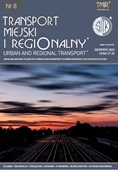 SITK
SITK 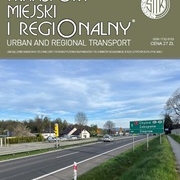 SITK
SITK 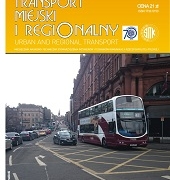 SITK RP
SITK RP 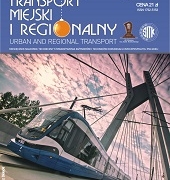 SITK RP
SITK RP 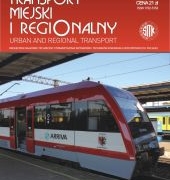 SITK RP
SITK RP 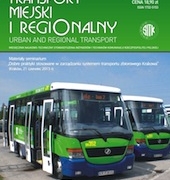 SITK RP
SITK RP 
 SITK RP
SITK RP SITK RP
SITK RP